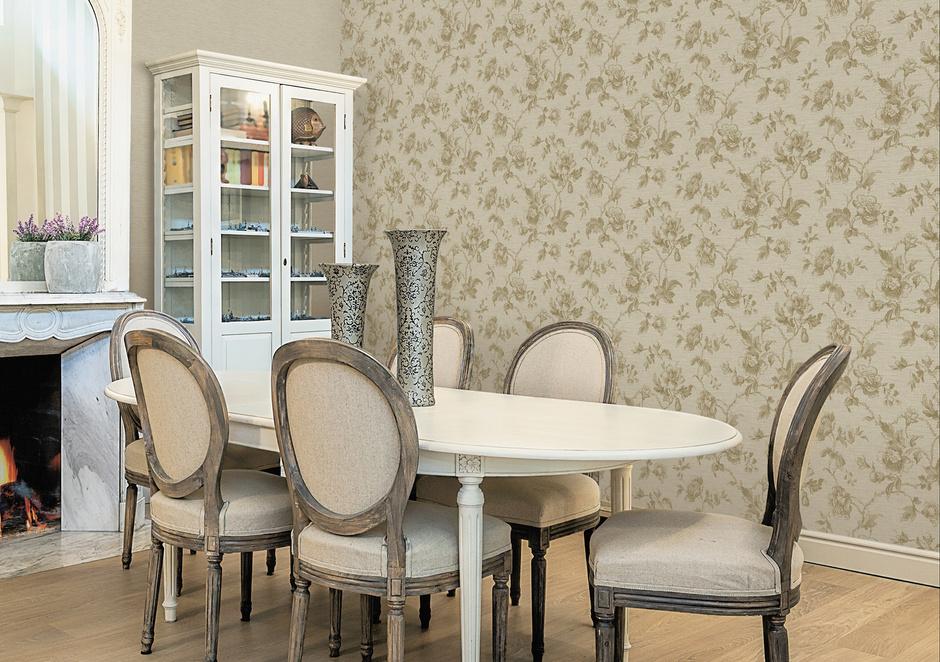Wallpaper has been a popular choice for interior decor for centuries. It offers various designs, patterns, and textures, making it versatile for adding character to any room. However, before you decide to wallpaper your walls, weighing the pros and cons is essential.
What are the Advantages and Disadvantages of Wallpaper?
Wallpaper comes with its set of advantages and disadvantages, which we will delve into below:
Advantages of Wallpaper
Aesthetics and Variety:
Wallpaper provides an extensive range of design options, from classic patterns to modern motifs. It allows you to customize your space and express your style. Additionally, you can choose from various materials like vinyl, fabric, grasscloth, or even 3D wallpaper, ensuring there’s something for every taste.
Durable and Long-Lasting
High-quality wallpaper can withstand wear and tear, making it more durable than painted walls. When properly installed and maintained, wallpaper can last years without fading or peeling, saving you money on frequent touch-ups.
Hides Imperfections
One of the significant advantages of wallpaper is its ability to conceal minor imperfections on walls. If your walls have small cracks or uneven textures, wallpaper can provide a smooth and flawless surface.
Easy to Clean
Most wallpapers are easy to clean and maintain. You can gently wipe off dust and stains with a damp cloth, keeping your walls fresh and vibrant.
Adds Texture and Depth
Unlike paint, wallpaper adds texture and depth to your walls, creating a visually appealing environment. Whether you opt for a subtle texture or a bold pattern, wallpaper can significantly impact your room’s overall feel.
Cost-Effective
While high-end wallpapers can be pricey, plenty of affordable options are available. Considering its long lifespan and ability to transform a room, wallpaper can be a cost-effective choice in the long run.
Enhances Acoustics
Thicker wallpaper varieties can help improve sound insulation within a room, reducing outside noise and creating a quieter, more serene atmosphere.
Disadvantages of Wallpaper
Time-Consuming Installation
Installing wallpaper can be time-consuming and meticulous, especially for intricate patterns. It requires careful measurements, cutting, and matching, making it more challenging than a simple coat of paint.
Difficult to Remove
While installing wallpaper is a precise task, removing it can be equally daunting. Removing it might involve a tedious and messy process depending on the adhesive used and the type of wallpaper.
Prone to Damage from Moisture
Moisture can harm wallpaper, causing it to peel, bubble, or discolor. As a result, there might be better places to apply wallpaper than bathrooms and kitchens.
Limited Lifespan in High-Traffic Areas
In high-traffic areas of your home, wallpaper may show signs of wear and tear faster than painted walls. Frequent bumps and scuffs can lead to premature degradation.
Incompatibility with Humidity and Temperature Changes
Extreme humidity or temperature fluctuations can cause wallpaper to expand or contract, leading to seam separation or wrinkles.
Fading Over Time
Specific wallpapers, particularly those exposed to direct sunlight, might fade over time. This can lead to uneven coloring on your walls.
FAQs about Wallpaper
Q: Can wallpaper be applied over existing wallpaper?
A: In some cases, yes. However, it’s essential to assess the condition of the current wallpaper and the type of adhesive used. Removing old wallpaper before applying a new layer is usually the best practice to ensure a smooth and long-lasting result.
Q: How to maintain wallpaper to prolong its lifespan?
A: Regular dusting and cleaning with a damp cloth are essential for maintaining wallpaper. Avoid using abrasive cleaning agents that could damage the wallpaper’s surface.
Q: Is wallpaper suitable for all rooms in the house?
A: While wallpaper can be used in most rooms, it is not recommended for high-moisture areas like bathrooms or kitchens. These spaces are better suited for tiles or moisture-resistant paint.
Q: Can wallpaper improve indoor air quality?
A: Some wallpapers are made with eco-friendly materials and low VOC (volatile organic compounds) inks, which can contribute to better indoor air quality.
Q: Can I install wallpaper myself, or do I need professional help?
A: If you have experience with DIY projects and attention to detail, you can install wallpaper yourself. However, it might be best to hire a professional installer for complex patterns and large areas.
Q: Can wallpaper be used to cover heavily damaged walls?
A: Wallpaper can cover minor imperfections, but heavily damaged walls should be repaired before applying wallpaper to ensure a smooth surface.
Conclusion
In conclusion, wallpaper offers many design choices, durability, and the ability to hide imperfections on walls. It adds texture, depth, and character to your rooms, enhancing the overall aesthetics. However, the installation and removal process can be time-consuming and challenging, and it is prone to damage from moisture and high-traffic areas. By understanding the advantages and disadvantages of wallpaper, you can make an informed decision on whether it is the right choice for your home decor needs.
You may also like
-
Hiring An Architect To Design Your Home
-
Winter is Coming: A Kansas Building Manager’s Guide to Preventing Frozen Pipes with Commercial Plumbing Services in Kansas
-
How to Install an Artificial Hedge Easily
-
Get Exclusive Diwali Offers on Whirlpool Double Door Refrigerators
-
Who is Best Pipe and Joint System Supplier in Malaysia

